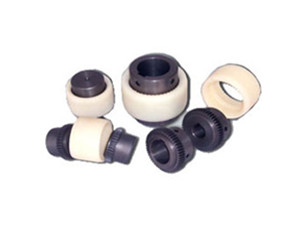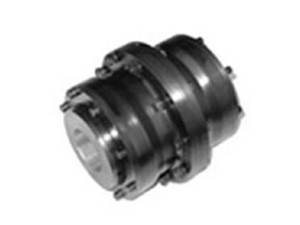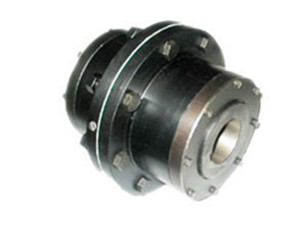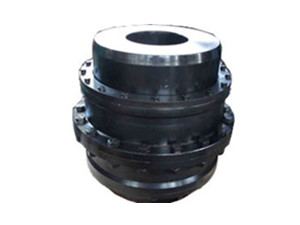Analyze several positioning methods of couplings
There are many types of couplings. According to the relative position and position changes of the two connected shafts, they can be divided into: ①Fixed couplings.It is mainly used in places where two shafts require strict alignment and no relative displacement during work. The structure is generally simple, easy to manufacture, and the instantaneous speed of the two shafts is the same. The main flange couplings, sleeve couplings, and clamps Shell couplings, etc. ②Removable coupling.It is mainly used where the two shafts are deviated or have relative displacement during work. According to the method of compensating displacement, it can be divided into rigid movable coupling and elastic movable coupling.Rigid movable couplings use the dynamic connection between the working parts of the coupling to have a certain direction or several directions of mobility to compensate, such as jaw coupling (allowing axial displacement), cross groove coupling Coupling (used to connect two shafts with small parallel or angular displacement), coupling (used in places where the two shafts have a large deflection angle or a large angular displacement during work), gear coupling (allowing Comprehensive displacement), chain coupling (allowing radial displacement), etc., elastic movable coupling (abbreviated as elastic coupling) uses the elastic deformation of elastic elements to compensate for the deflection and displacement of the two shafts, and at the same time, elastic elements It also has cushioning and damping properties, such as serpentine spring couplings, radial multilayer leaf spring couplings, elastic ring pin couplings, nylon pin couplings, rubber sleeve couplings, etc.Some couplings have been standardized.When selecting, you should first select the appropriate type according to the work requirements, and then calculate the torque and speed according to the diameter of the shaft, and then find the applicable model from the relevant manual, and then make the necessary check calculations for some key parts.
Fixing method editing 1. Elastic coupling positioning screw fixation: The two positioning screws have a gap of 90º to lock the fixed shaft. The traditional fixing method, because the front end of the screw contacts the shaft, may cause damage or damage to the shaft. Difficult to disassemble.
2. Elastic coupling clamping screw fixation: Utilize the tightening force of hexagon socket bolts to shrink the slit and clamp the shaft tightly.This method is convenient to fix and disassemble, and will not cause damage to the shaft, and is a very common fixing method.
3. Elastic coupling keyway type fixation: suitable for high torque transmission. In order to prevent axial sliding, it is usually used together with set screw fixation and clamping screw fixation.
4. Elastic coupling with D-shaped hole for fixing: Usually, if the shaft of the motor is D-shaped, if the positioning screw cannot be fixed, the hole of the coupling can be processed into a D-shaped corresponding to the size of the motor shaft. The hole is fixed with the positioning screw, so there is no need to worry about slipping.
5. Expansion sleeve fixation: tighten and fix the account cover by tightening the four positioning screws on the end of the coupling. It is suitable for the connection and fixation of some stepping motors and servo motors with large torque, such as expansion sleeve diaphragm couplings. , Expansion sleeve plum coupling, expansion sleeve bellows coupling, expansion sleeve elastic coupling, etc.
There are many kinds of couplings, such as diaphragm type, clamping type, taper sleeve tightening type, etc. Each type of fixing method is different, it depends on your choice.Positioning depends on the technical requirements, including axial distance, up and down height and angle deviation, left and right distance and angle deviation.Large-scale machinery with higher cost requires smaller deviations, and it is more expensive to use laser alignment instruments and special tooling.The dial indicator is not very strict.
relevant information
- Function of coupling
- Treatment method and lubrication of gear coupling failure
- The reason why plum coupling is often damaged
- The difference between star coupling and plum coupling
- The structure and advantages of JQ type clamp coupling
- How to install and connect the coupling
- Installation technology of drum gear coupling
- The keyway type and code of the shaft hole of the diaphragm coupling
Ranking of similar articles
- Function of coupling
- Treatment method and lubrication of gear coupling failure
- The reason why plum coupling is often damaged
- The difference between star coupling and plum coupling
- The structure and advantages of JQ type clamp coupling
- How to install and connect the coupling
- Installation technology of drum gear coupling
- The keyway type and code of the shaft hole of the diaphragm coupling
- Specifications and parameters of plum coupling
- Advantages of elastic pin coupling





